I recently suffered through a bit of a health crisis. The worst part is I brought it on myself. Unknowingly (kind of). I actually thought I was doing something good for myself. Turns out, not so much.
As I type I am awaiting a procedure called a ureteroscopy. Translation: big fat bummer. Actually a ureteroscopy is a procedure where a doctor goes into the ureter (the tube that leads from your kidney to your bladder) to retrieve kidney stones that are too big to pass on their own. Good times. You may be wondering what kidney stones would have to do with moderation, actually quite a bit. But to understand why I ended up where I am today you will need…
A little history:
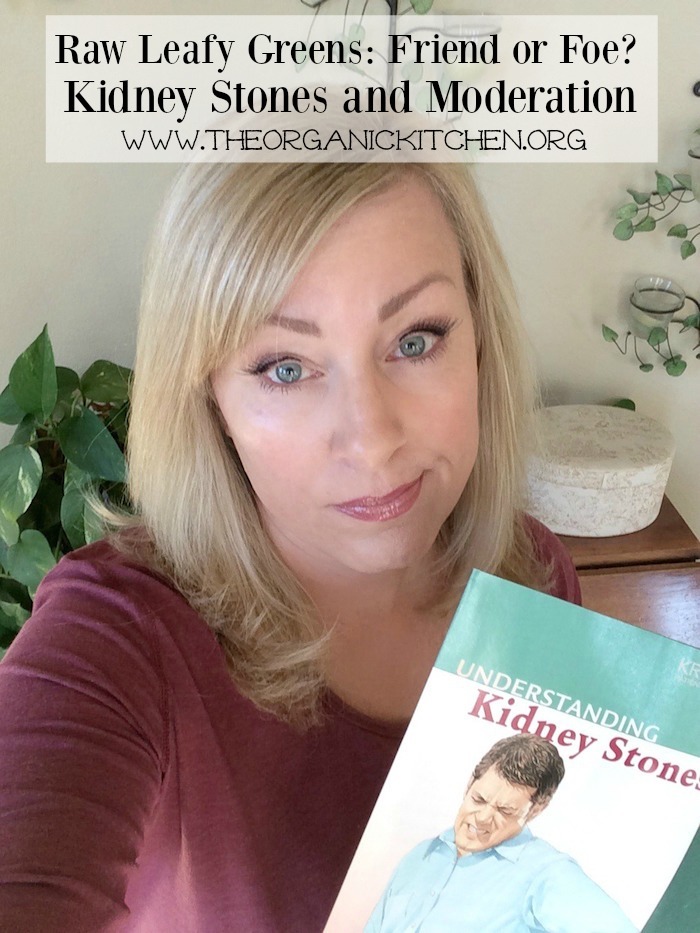
Even though this pamphlet looks like it’s from 1967 it is the latest and greatest in kidney stone prevention. You can see I am thrilled to have received it.
In 1995 at the age of 33, I had my first bout with kidney stones. I lost. I will spare you the details, but I will tell you kidney stones are extremely painful and my episode ended in emergency surgery. In 1995 the only advice the urologist gave me to prevent a future recurrence was “drink lots of water, avoid calcium rich foods, chocolate, leafy greens (no reason given and I didn’t ask because I was dumb) and soda, especially colas*”. Four of those five recommendations still apply today. Avoiding calcium rich foods turned out to be very bad advice and is no longer given.
After giving these recommendations my doctor said “Do the best you can but honestly, it may or may not help. Some people are just ‘stone makers’.” I had never heard the term ‘stone maker’ before and those words struck fear in my heart. Am I stone maker? And if so, why? I was determined to find out the reason if possible, and do my best at prevention. I NEVER wanted to experience that kind of pain again, this coming from a woman who has had six babies, four of them with no pain medication.
At the time I was definitely eating a less than stellar diet. So I set out revamping my bad habits. Gone went the soda, processed foods, most sugar and anything that came in a box. I thought I was drinking enough water but as a busy mom perhaps there was a chance I wasn’t drinking as much as I thought, so I made a conscious effort to do so. I ignored the ‘calcium advice’ because even before the days of Google after a little research I discovered that advice was on it’s way out. I wasn’t eating a lot of leafy greens back then so I didn’t give that one much thought (oops) and as far as avoiding chocolate…well screw forget that! I hate to say it but I ignored that advice, because frankly, I am an addict.
The good news is everyone in my family benefitted from the dietary changes we made! My husband and I lost weight, the whole family got healthier and my children broadened their food horizons. I stayed vigilant as the odds of avoiding a recurrence were quite definitely not in my favor. The bad news is a whopping 80% of kidney stone sufferers have a recurrence and the younger you are when you get your first stone the more recurrences you are likely to have (insert poop emoji here) . The good news is all was well for nineteen years. Nineteen years!!! I thought I was one of the lucky few to escape. The bad news is, I was wrong. The bad news is that ‘bad habits’ are not the only thing that can cause an imbalance leading to health problems….the bad news is sometimes too much of a ‘good’ thing can too.
Ouch! The Return of the Dreaded Stones
On Thanksgiving weekend (2015) while on vacation, symptoms that were awfully familiar began. I was filled with dread. I had a pretty good idea what was going on and after a trip to the emergency room and a CT scan upon returning home, it was confirmed: two stones, both too big to pass. I was pretty disheartened. After whining and sulking for a while I pulled up my big girl pants and got to work.
What’s New in The World Of Kidney Stones?
I met with a urologist and it turns out in nineteen years there have been some new developments regarding advice given to prevent stones. My doctor said, and I quote “90% of prevention is diet related”. Well this is quite different than what my previous doctor said. This new doctor again stressed drinking enough water, no soda (I don’t drink it so that is easy) watch your salt intake (that is new advice) and last “avoid chocolate, nuts and leafy greens”. I am not as dumb as I used to be so this time I asked why. The answer: they are high in oxalate….wait, what? I had heard the term oxalate before but what exactly is ‘oxalate’? What foods have oxalate and was I eating too many of them? I needed to examine my diet closely, scrutinize it in fact, and figure out where I had gone wrong!
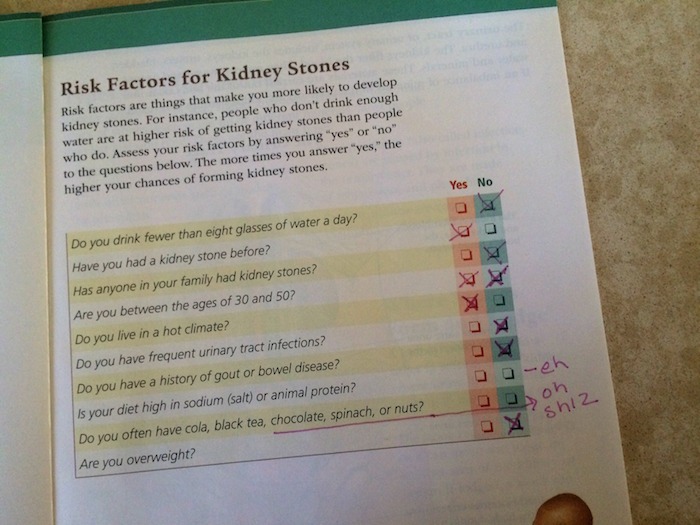
Take a look at the risk factors and my answers. If you ignore the fact that I accidentally marked the wrong box for age, I only answered yes to three risk factors! I have had a stone before, I eat nuts, chocolate and spinach and I live in a hot dry climate. California is in what is known as ‘the stone belt’ of the United States. People that live in southern states with a hot dry climate are more likely to have kidney stones.
So what is oxalate?
Oxalate, also called oxalic acid, is an organic acid found in many plants, fruits, vegetables, legumes, coffee, tea and nuts that protect the plant from being eaten by pests. Most high oxalate foods taste bitter when eaten raw. Oxalates are also made within our own bodies. Most kidney stones, including mine, are ‘calcium oxalate’ stones. When consumed in high amounts oxalate and calcium bind together to form crystals, these crystals eventually form a stone. This is why back in the day you were told to avoid calcium if you had kidney stones. It turns out that was terrible advice as calcium is an essential mineral the body needs to survive. On the other hand as long as you eat a balanced diet, limiting oxalate does not cause health problems. Could I have been consuming too many of these high oxalate foods? And what foods are high in oxalate? I googled and found a great website (link below) that listed foods and their oxalate values. What I discovered was shocking! I had unknowingly and inadvertently made changes to my diet in the last three years that were a kidney stone disaster waiting to happen.
It is important to note that a diet rich in oxalate is not the only ‘over consumption villain’ when it comes to kidney stones. The second most common stone, uric acid stones, are related to the over consumption of protein and often occur in people with a history of gout. And if you are wondering why cola is a villain when it comes to stones, it is because colas are high in oxalate and phosphorus which bind with calcium and create calcium phosphate crystals that eventually create stones. Cola drinkers are up to 23% more likely to have stones than non cola drinkers (link below) So again, whether it’s greens, nuts, cola or meat…moderation, moderation, moderation. (Unlike meats, veggies and nuts, cola has no redeeming qualities and therefore shouldn’t be consumed even in moderation IMO)
Why do some people have problems with oxalate and others don’t?
Well, therein lies the mystery. The fact is no one knows for sure, but there are some interesting theories (hint: magnesium deficiency, gut problems and/or thyroid issues)! Most people process oxalate and excrete them with no problem. Others don’t and oxalate binds with calcium creating sharp, jagged edged crystals that congregate in the kidney (stones), joints (causing arthritic like pain) and even in the brain and heart. We do know the incidence of kidney stones is higher in men than women, it is on the rise in children, that it seems to run in families (although there is argument over whether this is due to genetics or the fact that habits run in families). For instance, not one member in my family on either side of the tree has had stones except me, lucky me. It is also believed that some of us may over produce oxalate, could I be in that category?
Where I Went Wrong
When I examined the changes I had made to my diet in the last three years I could only come up with three changes: I had begun juicing and making smoothies with raw dark leafy greens, I was eating more nuts, nut butters and drinking nut milks, and to add variety to my repertoire I added new vegetables into my daily routine: Brussels sprouts, sweet potatoes, beets, and kale. I had always eaten raw spinach but had recently upped the ante with the juicing and smoothies.
When I looked at my handy dandy new list of high oxalate foods, guess what I discovered? Before three years ago I had naturally been eating a low oxalate diet, not on purpose, it just so happened the foods I liked were low in oxalate. BUT everything I had added to my diet in the last three years was super high in oxalate...and of course I was still stubbornly eating chocolate. Dark, rich, bitter, delicious oxalate filled chocolate.
Now before you panic I want to make something clear…
I AM NOT saying greens are bad for you. I am not saying potatoes are bad for you, or dates, or nuts are bad for you. Even chocolate is not bad for you. What I am saying is that for a certain segment of the population (about 20%) these ordinarily healthy foods consumed daily may wreak havoc. (People with hyperthyroid can also be affected by consuming large amounts of leafy greens, link below) Anyone with a history of kidney stones or gout may want to exercise caution when it comes to high oxalate foods. And even if you have none of these conditions, the new year is a great time to remind everyone that balance and moderation is always a good idea. What I am saying is I wish had I heeded my own advice, the advice I dispense on this very blog! What advice is that? Eat foods that are in season and practice moderation.
Eating Foods In Season = Forced Moderation
Eating foods in season has many benefits. When in season produce has more nutrients, tastes better and is cheaper to buy, but here is an angle I never thought about before: eating foods in season is ‘forced moderation’. Most fruits and vegetables are in season for a few months, therefore our access is to these foods is limited. If I had been heeding my own advice when it came to my morning juices and smoothies I could not have consumed spinach, collard greens and nuts year round…almost 365 days a year for three years. See the wisdom in this? The seasons and nature itself has designed a system which protects us from ourselves. Eating the food I was eating everyday went against how nature would have it, and therefore I was consuming way more oxalate than nature intended.
Moderation: A Wise Principle
In our society we tend to go overboard. We seem to have the mentality that if something is beneficial it is even more beneficial if we do more of it, more often. “If a little spinach is good for us, lots of spinach is better!” Not so much. When it comes to many things in life this is simply not so. Even good things when over done can cause problems. The key to a happy healthy life is finding balance. Moderation is balance’s best friend, compadre and cohort. Let it be yours too.
Three Possible Culprits: Magnesium Deficiency, Benign Thyroid Tumor, and Lack of Certain Gut Bacteria
Harvard researchers found that taking 180 mg of magnesium along with 10 mg of vitamin B6 daily will prevent kidney stones by 92.3 percent per year! (See links below) Another study showed about a 90 percent reduction with magnesium alone (500 mg daily). So obviously I am supplementing with magnesium now. I take magnesium salt baths and take an oral magnesium supplement (affiliate links). I cover my bases. Another plus, correcting my magnesium/potassium deficiency has improved my chronic insomnia and leg/foot cramps!
Another proven culprit in the production of calcium oxalate stones: hyperparathyroisdism. If you have stones this theory is worth checking into. I was screened and this was ruled out for me.
Interesting Theory: Several genera of probiotic bacteria including Lactobacillus and Bifidobacteria, appear to be capable of metabolizing oxalate, thus reducing urinary oxalate and decreasing kidney stone risk. In an uncontrolled trial, six people with calcium oxalate kidney stone disease and high urinary oxalate concentrations consumed a supplement containing Lactobacillus and Bifidobacterium strains for four weeks. Urinary oxalate concentrations dropped by nearly half at the end of the study. (See Link Below)
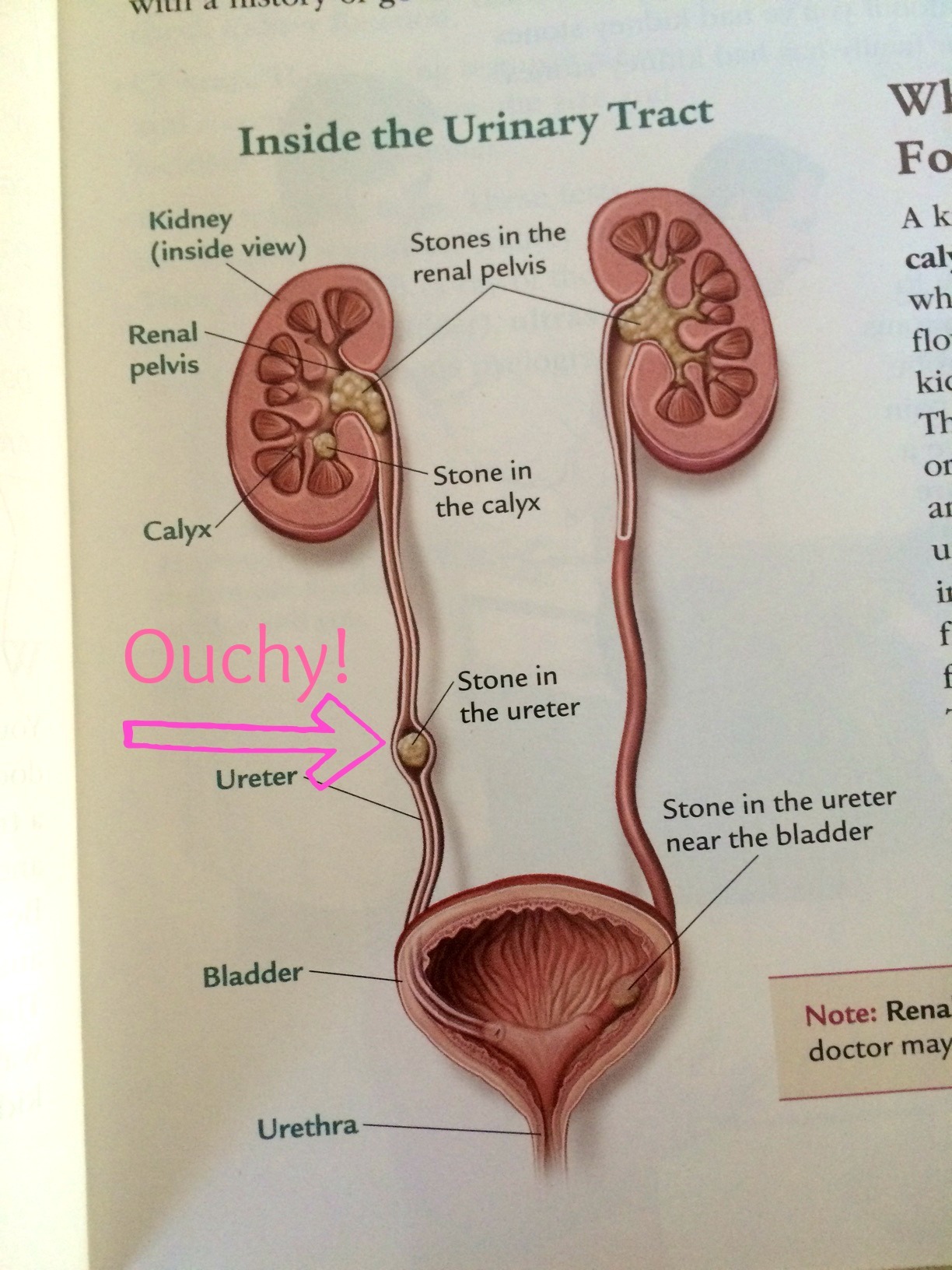
So Now What Will I Do?
Aside from supplementing with magnesium, I will drink plenty of water with lemon and go back to how I ate before three years ago. I was eating a healthy, balanced, low oxalate diet and had never looked or felt better. Will I continue to juice and make smoothies? Yes, but I will use vegetables lower in oxalate and add more variety instead of making the same juice and smoothie every morning (recipes will be coming). Will I still eat salads? Yes, but not with raw spinach. I will make my salads with arugula, baby greens and romaine, all low oxalate lettuces. Will I eat nuts? Not if I can help it! As far as potatoes (sweet and regular), Brussels sprouts, beets etc…I will use moderation, cook them properly to remove most of the oxalate (links below) and rotate my choices within the season. The goal is not to never have vegetables high in oxalate, the goal is eat low oxalate over all. My urologist’s exact words were “Don’t go crazy with the diet”. Again, moderation.
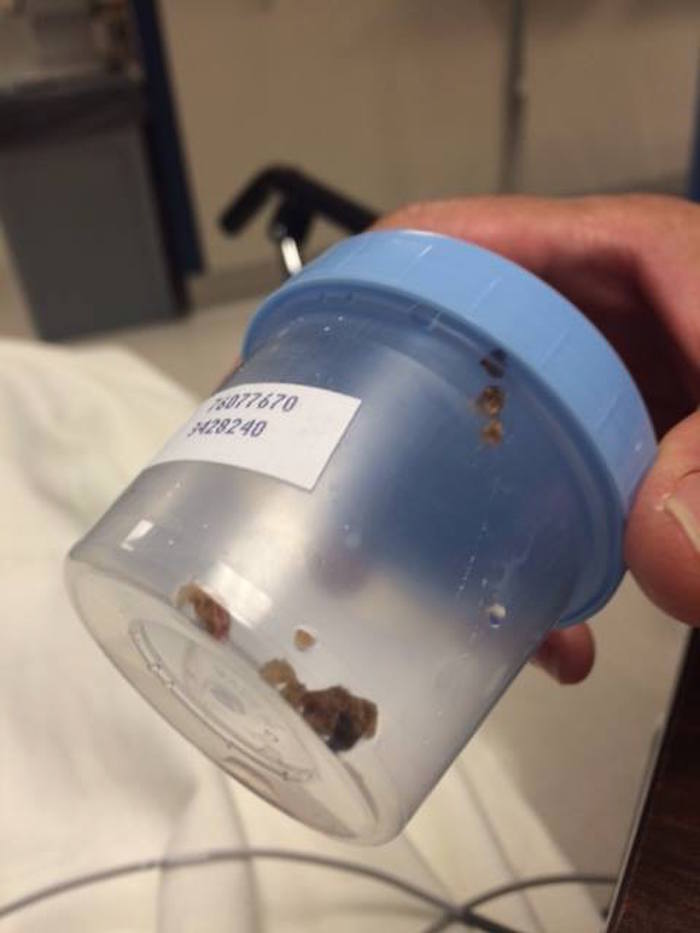
POST SUGERY: The cause of all my woes. These are my stones after being crushed and removed. One was 8mm the other 5mm. Both made up of calcium oxalate. After the stones were analyzed here is my doctor’s recommendation: Drink 80-100 ounces of water a day with lemon, no soda, nuts or seeds of any kind, no spinach (or other high oxalate leafy greens) no chocolate, no calcium supplements (although calcium rich foods are fine) lower salt intake. Moderate amounts of protein.
Onward and Upward!
If 19 more years pass without stones I will be very happy. If I have a recurrence then I will know I have done all I could with the current knowledge and be satisfied with that (and maybe cry a little). The fact is there is still a lot mystery when it comes to kidney stones and some controversy over the best ways to prevent them. So I will continue to research, listen to my doctor, do what feels right for my body and pray for the best. ~ Linda Spiker
References, links a great information:
Magnesium and the Lactobacillus and Bifidobacteria link to Kidney Stones
Comprehensive Oxalate Food Chart
Could a Benign Thyroid Tumor Be Causing Your Stones?
Think Raw Veggies are Best? Think Again
Everything you want to know about kidney stones courtesy of Harvard Medical School
Kidney Stone Prevention ~ general and prevention info here
lowoxalate.info is a very helpful website with a lot of information about oxalate, conditions caused by high oxalate consumption and a printable list of foods and their oxalate values.
Oxalates and Their Role in Autism and Chronic Illness
Kidney Stone Prevention from Dr. Mercola
Why it Takes Rose Colored Glasses to Love (most) Green Smoothies: The Scoop on Oxalates by Megan Stevens at Eat beautiful is an informational article about oxalates and a guide to preparing foods to make them easier to digest. Includes recipes!
How to Prepare Nuts Properly: a tutorial from Megan Stevens at the Eat Beautiful Blog
The Dark Side of Kale and How to Eat Around It: Greens and Hyperthyroidism from Common Health Blog
The Cola/Kidney Stone Connection
MAY I PLEASE ASK A LITTLE FAVOR?
We small bloggers need all the help we can get. Subscribing and sharing on social media is very appreciated!
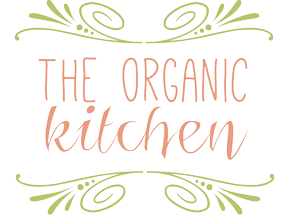
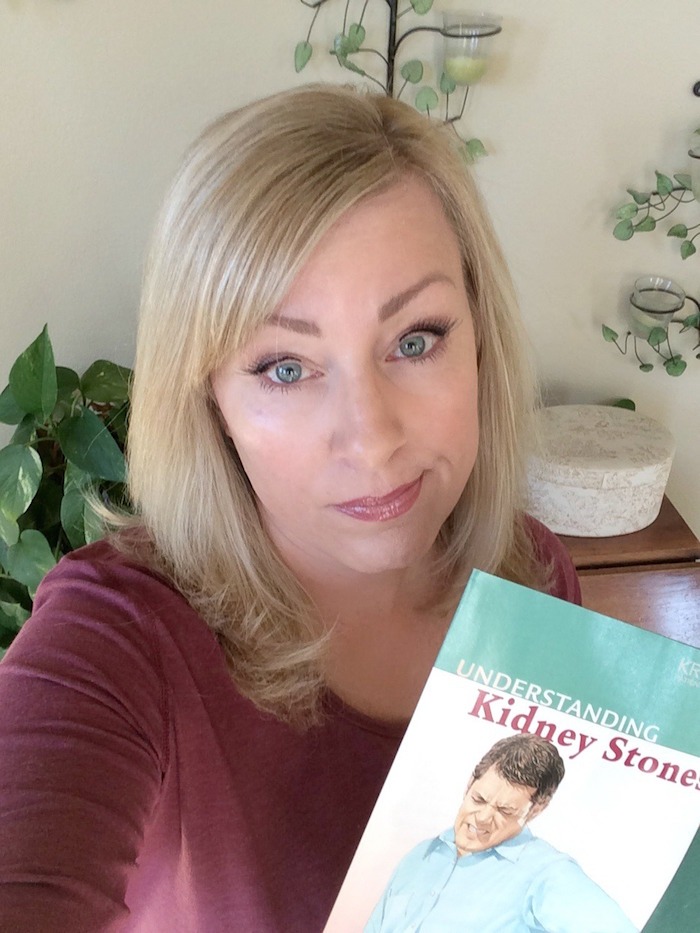


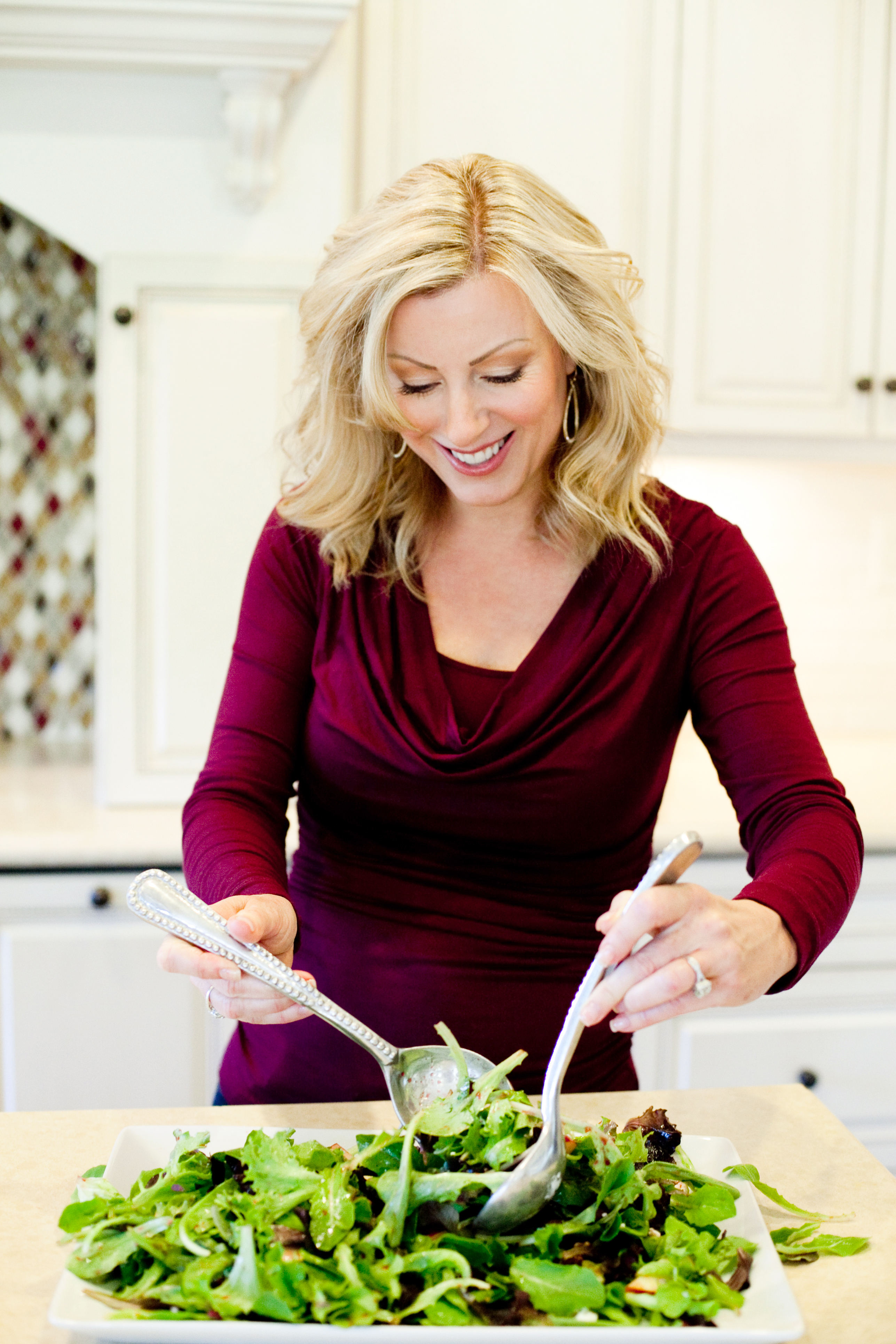



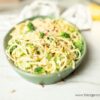


Oh, Linda, a wonderful article. I’ll share it and hope many others do too. May we all learn as you learn. We’re in this together.
Thanks Megan. And thank you for your contribution!
Sorry about the kidney stones! You must have done something right with the diet in general because you look fantastic! It must be having a number of kids that keeps women young (at least I hope it is!).
Hahaha! I don’t know about that theory but thank you. I do think I was doing something right for a number of years…but then I blew it. Live and learn! Now I start from scratch with cleaned out kidneys!
Oh Linda, I’m so sorry you had to learn this lesson in a painful way. 🙁 Glad you are getting the message out that moderation, in all we do, is key.
So sorry you’re going through this … darn oxalates! Good for you for listening to your body and making changes that work for you. xo
Oh Linda! I am so sorry you are in so much pain!! I can’t tolerate raw greens like kale either and sometimes I feel bad when everyone taughts how great it is, but I know my body!
Thanks Renee! I will be a new woman as of 1 pm today!
Very interesting! I’ve never really heard about this stuff before. That’s for sharing.
I’m so sorry you have to go through this but this article is seriously invaluable. I’m sharing it on my wall. I hope you are soon on the up and up!
Thank you Loriel. I hope it can help someone else:)
This article came at the right time. We are in the process of finding out what is causing my husband to have kidney stones. He’s 30 and has had 3 episodes of stones thought out his life the last two being two years apart. We have started to eat better and we have incorporated a lot of the dark greens. This will be a great information piece to share with his urologist at his next appt. Thanks for sharing this!!
I am glad you are improving your diets but be careful with the leafy greens! Use moderation and switch them up within season. Better safe than sorry!
When you were doing your research was there any testing that could be done to see what greens would effect the kidney stones more then others? He just had to do a 24 hour urine test and blood work and they sent the stone off for testing to see if they could pin point the cause. We live in Florida so a very hot climate. We also have two sons 5 and 2 and I worry about them being genetic. My husbands mother, one of his sisters and his bother have all had kidney stones. His bother was airlifted from his Coast Gard boat because of one.
Hi Nichole,
I am so sorry to hear that. Seriously I am weeping. Could be the pain meds and my fragile emotional state, but I feel for your family. If the stones are calcium oxalate the biggest offenders are spinach, nuts (unless prepared properly), coffee, black teas, chocolate and colas. If you prepare some high oxalate veggies properly (cooking them) it can lower the oxalate values as well. Be sure to click on the links I provided at the bottom of the page. If you click on the link to the Low Oxalate Website they have a printable list of foods and their oxalate values. Print it, read it, take it to the store with you when buying groceries. Hope this helps and hope your family stays well.
Thank you for all this great information. I hope you feel better soon!
okay, first and foremost, are you seriously 52? you can’t be. no way. second, can i look like you when i am 52? finally, thanks for sharing, i’m not quite in my 30s yet but this is such great knowledge and information. glad you are on the mend! xx alexandraannm
Alexandra, I love you.
Oh wow, I have had a kidney stone before, so I totally feel your pain! Thankfully it was small enough to pass, but boy was it painful!! I believe mine was due to too many leafy greens, and not enough hydration (in the middle of summer)… This is such a thorough article, I appreciate all the time and invaluable information you’ve shared here! I will definitely be sharing! 🙂
Oh Sarah, sorry to hear that! But glad it passed.
I feel like you wrote my story!! Docs have just found my 5th stone forming! My first 3 as a result of pregnancy (cant complain too much = 3 glorious kids) but my 4th stone was due to me following a Paleo lifestyle to loose weight and get healthy! My only reward was a 10mm stone!
No more crazy diets, following low ox and praying this new stone wont grow!
Oh girlfriend 10mm!!!! Can they litho it now? Good luck. Stones are no joke.
I have been eating a large spinach salad almost every day for a year. Also lots of nuts and peanut butter. Just had a large stone removed, the first one ever, and the whole episode was a nightmare. Thank you for sharing your story and knowledge! I am going to follow your advice religiously. I’m not sure, though, what vegetables are in season when you live in a state with a short growing season. Do I just look at what is available in the supermarket at the best price? Local produce is only available mid summer to early fall. Thanks again for the wonderful information!
Deb so sorry. I feel your pain. Ugh. Be sure to link to the oxalate info sites and print their charts. Take those with you to the store till you get a handle on which foods are high, med, low etc. When it comes to what is in season when, Google is your best friend!
Linda, I am so grateful to have come across your site. I cannot tell you how much you have helped me today. You are a blessing. Thank you for sharing your story.
Sue
I am so glad! Thank you for sharing that with me:)
Hello,
I am new to your post. I am 53 and have a 6-7mm stone stuck in my ureter currently. I may have to have the surgery. was is a painful surgery? Did you have to have a stent put in? If so, how long did the stent stay in. I heard that is worse pain.
This is my 2nd stone. The other passed while in the ER. I too went on a spinach and beet juicing diet with almonds and cashews snacks daily, in quantity! I thought I was on a very healthy diet. Dark Chocolate is my fav. NOW I know… Thank you for sharing.
Oh Lisa I am so sorry! Wow, live and learn huh? Ok there is good news and bad news. Nineteen years ago my stone was stuck in the ureter, about halfway down. Very painful. They went in, crushed it, removed it and I was fine! That surgery was a piece of cake. I had a stint and never felt it. This time however there were two stones stuck at the top of my ureter blocking the flow leaving my kidney. I was very swollen and instead of having to only go halfway up to crush and remove the stones they had to go all the way up and because they were embedded in the kidney they had to cut them out…anywho, it was awful and my stint hurt like heck for 4 days. So the good news is, your situation sounds much more like my first surgery, not my second. Something I wish I knew: Have magnesium on hand after surgery because the pain pills they give you make you unable to “go”. (If you need pain pills, hopefully you won’t!) Gosh good luck. I hope all goes well. Get it taken care of, kidneys are nothing to mess with!
where can i find scientific research showing that the consumption of leafy greens are linked to kidney stones? Most of the time people are courage to increase the consumption of greens and they never mention how much is too much, neither give a link to scientific data, I search online and can’t find scientific studies related to that issue, just rumors.
Hi Lazaro, I don’t know if you read the whole post but I do explain ingreat detail the correlation between eating high oxalate foods and kidney stones. I also link to articles at the bottom of the page and mentioned that my kidney surgeon told me leafy greens are linked to kidney stones and recommended I cut back. Also the pamphlet that I include a photo of in the post explains that too many leafy greens can contribute to stones.So while I can’t link you to specific studies I will just say if my kidney surgeon says I was eating too many leafy greens and leafy greens contribute, then I will believe him and take his advice. That said, it seems the main contributor to stones is magnesium deficiency. Here is another link if you are interested. Pay particular attention to #1. https://articles.mercola.com/sites/articles/archive/2011/09/29/six-ways-to-keep-kidney-stones-at-bay-from-the-harvard-health-letter.aspx
Interesting, my doctor didn’t tell me anything specific on oxalate consumption yet, and I was told to drink silk almond milk. I am 24, second stone in. In 2011, I was only 19, suffering with an unknown calcium oxalate stone, going to the ER, as my kisney was flooded and beginning to fail. It was only 9x1mm (you’ll hear why I say only in a bit), had a catheter immediately after the IV, later a stent, and about 3 weeks later, all was well. Now, back to date. It’s 5 years later, and on my birthday, I feel I have a UTI, no insurance so they just gave me a shot in the rear, and some antibiotics. A few weeks later…guess who’s back…Mr.stone. I’m currently at home, with yet another stent-stone- combo,only this time…it’s 18x8mms (yes you read correctly, you may now cringe). That’s all I can think of typing atm, needless to say, thank you very much for this detailed report, I only wish I knew these things sooner. ;.;
Ooooohhhhh man. Interesting they recommended almond milk when almonds are on my number one not to eat list (as are all nuts). I am so sorry. What a nightmare. Please pay attention to the information on magnesium consumption. My doctor actually recommened 750 mg a day. One (250mg) in the morning two at night (500mg). Magnesium deficiency is a huge contributor to kidney stones. I hope you are on the mend soon. My sympathies!
Not sure if my post made it or not, but I hope it did. I will retype it if necessary, but want to say thank you again.
I know several ppl that have gone through it, but I have yet 2 experience it myself. (Knock on wood)
I went 2 the ER 2-3 yrs ago w/ a stomach virus (Dr. thought it was an appendicitis) & was told I had Kidney stones as well as an appendix stone(was grossed out when I googled that!). So I started drinking more water w/ lemon 4 my kidneys, but I do take a magnesium & potassium supplement along w/ the multivitamin too. I’ve had no problems (Knock on wood again!) BUT the appendix stone is always going 2 b a time bomb waiting 2 happen.
I have never even heard of appendix stones…yikes! I hope your time bomb just never goes off 🙂
I’ve just had my second stone surgically removed. Staring at 16 to now 30 I’ve passed close to 20 stones… this was very hehpful. I am excited to try your tips! Wish me luck and thank you for sharing.
Oh my. I am so sorry to hear that. I have recently heard something new that might be worth looking into. A certain segment of “stone makers” have benign tumors on their thyroid that trigger calcium to be leached from bones, not only causing stones but also osteoporosis. They can be surgically removed and voila! The stones stop. You may want to talk to your doctor about it since you have recurring stones.
Interesting, thank you so much for the lead! I will bring it up to my Urologist on the what ifs. At this point I would sleep upside down if necessary. Over it!
Cheers
I am disappointed that the Oxalate Food Chart link does not seem to be working.
Hi Kathryn, thanks for pointing that out! It used to work. I added a new link. Take a look.
Excellent…thanks for sharing. Great dietary tips as well as about oral and topical magnesium.
You are welcome!
is coffee can cause kidney stones?
According to what I can find coffee is low in oxalate, approximately 1 mg per cup. So have at it.
Thanks Linda, I was upset when i found two stones within one year off my surgery and All doc say the Same udt drink more water… now let me try your suggestions..
Ganesh
So sorry. Magnesium seems to be the most promising development in prevention. Good luck!
Sorry you had to learn it the hard way.
Does high oxalate foods have the same effect on UTI’s too ?! I have recurrent UTI’s infections due to water retention.
I’m on an AIP diet due to lots of autoimmune conditions, noticed that since I started juicing and eating lots of leafy greens my UTI’s are chronic and they just won’t go ! Any help ?!
I’m so confused and I’m constant pain.
I am so sorry to hear you live with constant pain. Honestly I have no idea if those foods contribute to UTIs. But I am going to recommend this article for you to read. It sounds like you don’t have a diagnosis. Hope this helps: https://eatbeautiful.net/2015/10/04/how-i-healed-my-interstitial-cystitis/
Hello, Linda! I surely do wish that I had read your exceedingly helpful article before now. My first kidney stone experience was in the middle of my teaching day. Pretty grisly. I would not wish that extreme pain on anyone. Second was found 2 years later with a routine sonogram. Too big to pass so litho took care of it. I think back on the advice given to me by doctors: no chard, spinach, kale, collards. My four favorite dark leafy greens. No discussion of moderation or other nutritional adjustments or additions to my diet. You have done all of us a great service with this article.
Well thank you and so sorry about your stones. I am glad litho took care of your most recent bout. I have recently learned some new things and will be updating this article so be sure to check back!
I’m sorry that you had to experience this as well as the many others who have commented on this article have as well. And it certainly is thought provoking and important to be aware. However I’m currently researching this caveat in regards to common nutrient dense fiber-rich plant foods that have an abundance of beneficial properties versus the oxalate caveat as well as a few other caveats such as phytates and other anti-nutrients. It seems to me that there is some discord in the literature and information out there in regards to oxalate content in foods and stone formation. I do recall a client telling me about how he avoids oxalate rich foods now and the one that I am particularly I’m aware of is spinach in which case I do not eat it that often and when I do and very prudent moderate amounts. And I do eat 100% cacao dark chocolate in prudent moderate amounts. I think my biggest issue is the abandonment of nuts and seeds due to the oxalate content. Now this is a new one to me. I do recall I think he said he has to avoid or dramatically reduce the intake of certain nuts that have higher oxalate content. But speaking of nuts and seeds there have been a plethora of studies showing they are associated with many improvements in metabolic health and even connected to longevity. In fact there are some studies showing that the avoidance of nuts and seeds had a negative impact on life span. This is not to disagree or refute you this is simply too shine light on the evidence that has been presented in the research field. And nuts and seeds are also a staple in the blue zones diet of which consists of the longest lived people in the world. Then there’s the other aspect of oxalate metabolism and is currently being investigated such as our gut microbiome and its ability to harbor oxalate digesting gut flora. While human studies are still in their infancy and currently on the way there have been some promising studies done in the rodent model showing that it diet high oxalates actually has been shown to increase oxalate degrading bacteria in the gut. Now again this is just early research and there needs to be more research but it seems to me that there are other factors at play besides diet that influence stone formation. I’m not discounting the effect of diet but my last question is in regards to nuts and seeds and leafy greens. To my knowledge leafy greens and nuts and seeds also tend to be quite high in magnesium inherently so it seems to me that the synergy of this nutritional matrix in these foods would naturally somewhat buffer or counter the oxalate content. Leafy greens tend to be high in magnesium and calcium so while I’ve read some studies suggesting dairy consumption or taking calcium to buffer the oxalate content of a certain oxalate food, this seems counterintuitive because many of the oxalate rich foods tend to also be high in magnesium and calcium. And then there’s the issue of the calcium oxalate binding. Some studies or as you suggest, calcium in the presence of oxalate can create calcium oxalate stone formation but other studies say that when calcium binds to oxalate thereby reducing the absorption of it and it safely passes through via exit. I certainly agree with eating with the seasons and I will certainly consider cutting down on my nut and seed consumption, but to be quite honest and based on the aforementioned long list of benefits of nuts and seeds that will be probably my biggest challenge in regards to trying to cover all corners via oxalate caveat. I’m going to continue research this topic. I’m also going to research the effect of exercise and fitness level on oxalate metabolism and stone formation as is as this could be another angle to consider. All that said your article and experience has definitely raised my awareness and I will continue to try and better understand this caveat.
Hi Ivan, thanks for your comment. Yes there is new information and studies on this topic all the time, which is great but adds to the confusion. My thoughts are that there are many different reasons that people form stones. For some it could be as simple as dehydration, for others it could be a parathyroid issue, and yet for others, oxalates. That is why I included information on all of it. I think the microbiome theory is very promising and am hoping something as simple as a specific, targeted probiotic supplement may help some kidney stone sufferers. Time will tell!
Hi Linda, Well, I decided to add my experience to the list. First, I want to say that you have written a great article! I had my first bout with stones, biggest was a 7, two years ago. I am now 66 years old. I just had another xray and the urologist says I have only one little tiny stone and it was there before and has not grown. I was told about the oxalates and followed the diet pretty well . He said that I must be doing things right since the stone hasn’t grown in the past 18 months! The bad news is that I have been going off the diet recommendations a lot lately and am finding it difficult to remember the horror I went through. All is well so it doesn’t seem necessary to worry about it I guess. At any rate, your article has encouraged me greatly and I will get back on track!! I was told that too much Vitamin D supplement can cause stones. Have you read that at all? I had very low levels of Vit. D. and my doctor prescribed extremely high prescription doses for 4 months. I am wondering if this contributed to my getting stones.
I have been told that about vitamin d as well! I don’t supplement with it. Better safe than sorry.
One of the better written articles on kidney stones. Good job! You have done your research.
Really well-done article. I landed here mainly while looking for oxalate and acid content of various foods, so half that is provided here. What horror these things are, I hope you don’t get more with your new (old!) diet. Right now I’m basically giving up (black) tea. By giving that up my water intake has been able to skyrocket. (I drank a lot of tea, but usually reused the leaves, so I’m still miserable thinking I still managed to cause my own issues.)
The one thing I don’t see mentioned is the effects of alkaline vs acid urine. There’s a lot of data out there on how fruits and vegetables are generally alkaline-causing and most meats and most starches are acid-causing. Calcium oxalate and uric acid stones apparently form better in acidic urine, and calcium phosphate and (the another type I can’t recall) do better in alkaline urine. So, the idea is that you combine all of your current knowledge with this knowledge and further improve chances of not having more stones by striving for a neutral pH (7) urine. I just had an 8mm removed via ureteroscopy after suffering for thirteen months (the last eight have been horrible… and because of the pain being affected by movement, I ended up going through unnecessary PT for months on top of all of it). Other than it taking so long for someone to do something about it, I’ve been pretty lucky, though – the stent caused minor discomfort and I’ve felt great since the surgery a week ago. But this is my fourth stone in roughly eight years, so… I’m studying up on diet, all right!! And I agree with some others here… some urologists just tell you to drink a gallon of water and stop eating salt. They can be pretty useless. I did question mine and he just played broken record. “I don’t eat salt so is there anything else–” “Stop eating salt.” I am learning to be my own advocate!! Research, research, research!!
Ugh. So sorry about your surgery but glad to hear it wasn’t so miserable. Mine was very miserable the second time around. Interesting how it can vary from person to person. I hope all your research pays off and you are stone free from here on out. And I agree, the doctors don’t really seem to be up to date on the latest research about what causes stones. Sad 🙁 Good luck to you!
I have been scouring the internet for help and since this is exactly describing my last two years, I believe I have found the answer.I could have been the author of your article. Thank you SO very much for sharing this. Onward and upward..stone free!!
Video article HOW STONES FORM
Dr Fredric Coe. Amazing explanation if you like to see things
Scientifcally laid out and examined
Goes well with your explanation.
I suspect juicing is a generally bad idea. It overly concentrates whatever is within the food. Sounds like you haven’t taken the “too much of a good thing” notion to heart if you still drink juice. Until modern machines, we NEVER drank juice, it’s unnatural, we didn’t evolve in relation to it. It goes against the whole foods idea, an extreme form of processing
I do on occasion but never with high oxalate foods and always mixed with a good fat (coconut or MCT oil). I usually do cucumber/pear (or apple) if I do it at all.
One of the best articles I’ve seen about kidney stones. I started the paleo diet shortly after Gary Taubes’ book came out in 2010. Soon after, I developed kidney stones. Last year I was lucky enough to hear Sally Norton speak about oxalates, and now I understand the issue much better. In a strange turn of events, my husband is part of a study at the local naturopath college, and is eating tons of nuts, seeds, leafy greens, beets, plus a “green” supplement drink. Watching and hoping the oxalates go right through him.
Thanks Marta! I am sorry about your stones. It’s just the worst! I hope you never get another. So far, so good for me. But we shall see…
Hi, this resonates so much! I too introduced all of these extra goodies into my diet a few years ago on the principal more is better; now I’ve succumbed to renal stones too.
Just out of interest, you say you were eating a balanced, healthy diet three years prior to your stones; can I ask what you diet looked like, generally speaking (lots of meat, seafood etc) I ask as I’m vegan and cutting out oxalate foods, its like what the heck do I eat now. I recently heard someone say: “science can send a man to the moon but science can’t figure out what to feed him”
I was eating all kinds of protein (beef, fish, chicken) with veggies and small amount of fruit. But I wasn’t juicing, making smoothies, and eating as many nuts. I hope you can work out the details, I can see it being more of a challenge to cut back on oxalate being a vegan. Good luck!
Thank you so much for writing about your experience! I sympathize with you completely! My last kidney stone was 13 years ago when the doctor labeled me with Medullary Sponge kidney disease. However, I thought I was out of the woods until this last year. I began having irregular heartbeats, achy joints and muscles, weight gain, then kidney stones! Not a good year! My doctor wants to go in and get those stones, but until I get the nerve up to go through that surgery again, I am just dealing with the pain. Ugh! It seems to me those health issues I am dealing with may be linked to some underlying issue, but I am at a loss at what it might be. Meanwhile, I need to lose 25 pounds as my first line of defense and was wondering if you could recommend a weight loss concept for kidney stone sufferers? I am looking into the Keto diet and Trim Healthy Mama, but would like to find one specific to my health issues, kwim? Thank you again for your info!
Stephanie, please have your parathyroid looked into if you haven’t already. All the symptoms you are describing sound like it could be hyperparathyroidism. The great news is that can be determined by a simple blood test and is an easy fix. A 15 minute minor surgery can correct it. I know people that had the surgery and say it was life changing! As far as diet I would just say do as your doctor recommends and avoid lectins and oxalate. Here is a link about hyperparathryroid and stones: https://www.parathyroid.com/kidney-stones.htm
Hey Linda,
Im on my third bout with kidney stones in the last 20 years. I have 8mm, 7mm, 3mm and am waiting for them to schedule my procedure with the stent.
What I want to know is, did you ever publish your low oxalate smoothie and shale ideas?
Thanks.\,
Mark
So sorry Mark 🙁 Such a bummer. I did add two juice recipes: this one https://www.theorganickitchen.org/delicious-soothing-morning-juice/ With cucumber lemon and honey. And this one with apple, turmeric, orange and lemon… https://www.theorganickitchen.org/morning-glory-juice/
Good luck and hope you feel better soon!
I couldn’t find the part where magnesium helps prevent kidney stones. I just had my first one a week ago! What is the link if I may ask?!
Thanks!
I am sorry I have no idea where that link went and when I searched I could no longer find the Harvard piece, but I did find this:
https://www.lifeextension.com/Protocols/Kidney-Urinary/Kidney-Stones/Page-10
Those who have problems with kidney stones should consider taking Cat’s Whiskers tea. The herb helps to dissolve the stones in the kidney.
Thanks for the tip. I’ll check it out.